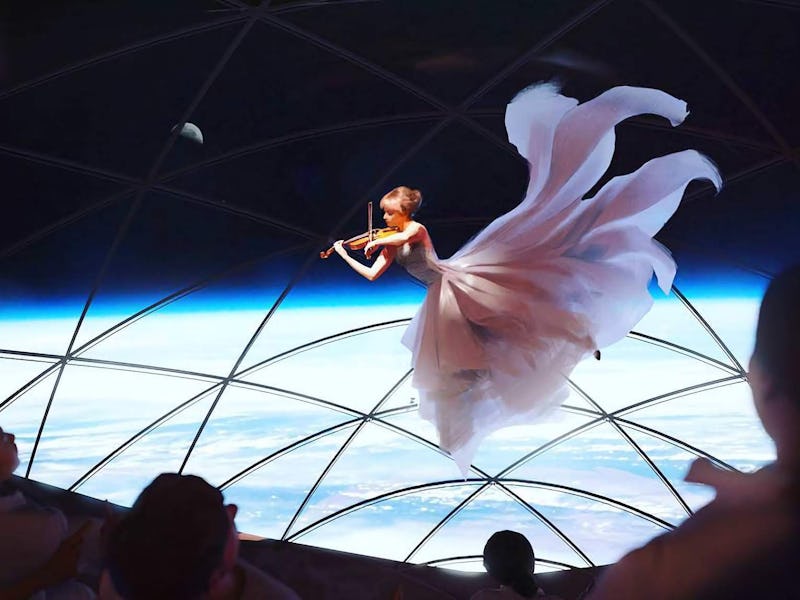SpaceX Starship: Elon Musk envisions musical performances in zero gravity
The rocket could power out-of-this-world concertos.

Forget violin concertos in G major – the performances of the future could take place in zero-G.
Elon Musk, whose firm SpaceX is building a rocket that could transport up to 100 people in space at once, has a vision for future space activities. On Wednesday, the CEO shared an image with his 31 million Twitter followers envisioning a musical performance in a ship above the Earth.
"Starship Concerto in Zero G," Musk wrote alongside the image, referring to the name of the stainless steel rocket currently in the prototype phase. It wouldn't be the first musical performance in space – Chris Hadfield famously covered David Bowie's "Space Oddity" on board the International Space Station – but the Starship could represent an opportunity for more artists than ever to be inspired by the amidst the stars.
The Starship has formed a key aspect of SpaceX's biggest future plans. The ship is designed for full reusability, enabling more ambitious flights like sending humans to Mars. It also runs on liquid oxygen and methane, resources that can be harvested on other planets, enabling the Starship to explore out further into the solar system and develop a planet-hopping network on the way. Musk has previously stated his ambition to establish a city on Mars by 2050.
With Musk's latest post, it goes some way toward indicating what people might do in space.
Musk's Twitter post.
It's not the first time Musk has shown off the vision of life on board Starship. The image made an appearance during the pre-presentation slideshow at SpaceX's September 2018 event, where Musk announced that Japanese billionaire Yusaku Maezawa would take a trip around the moon with Starship (then known as "BFR") in 2023.
The mission could offer further insight into how people may entertain themselves on board Starship. Maezawa plans to take six to eight artists with him on the trip, as part of a "Dear Moon" project where they would be encouraged to create works around their experiences. Maezawa cited photographers, painters, musicians, architects, film directors, and fashion designers as examples of those he would like to take on his tour.
Those passengers would have plenty of room to stretch out and get creative. The Starship is expected to offer 100 cubic meters of pressurized cabin space, similar to an Airbus A380 or the International Space Station. Musk noted at a September 2019 event that, thanks to zero gravity, space could be used much more efficiently as users would be able to take advantage of every corner of a room.
SpaceX's design for a Mars city.
From there, SpaceX's future passengers could branch out in all manner of directions. The company has stated its goals to build a base on the moon and a city on Mars.
Although the first few years in both places would be likely dedicated to establishing basic life support systems, future expansion could support all manner of activities. Musk has declared that Mars would need all sorts of businesses, from pizzerias to iron foundries. That means a diverse collection of talents making their way to the red planet, establishing these initial outlets. As experts predict Mars could one day form its own identities, divorced from Earth ones, this could represent an opportunity to expand Martian creative output further and capture the lived experience in the new city.
Musk isn't alone in calling for creativity in space. Jeff Bezos, whose Blue Origin firm is looking to develop a series of floating cities around the Earth, has called for more space to one day support up to one trillion humans on and around the Earth. These cities, he claimed, could support "a thousand Mozarts, or a thousand Einsteins."
Perhaps the great concertos of the future won't have been written on Earth after all.